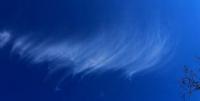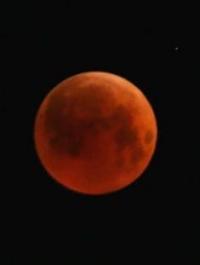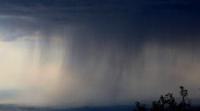You are here
Climate in Korgalzhyn reserve.



Wildlife Tours in Korgalzhyn reserve.
“A tulip doesn’t strive to impress anyone. It doesn’t struggle to be different than a rose. It doesn’t have to. It is different. And there’s room in the garden for every flower. You didn’t have to struggle to make your face different than anyone else’s on earth. It just is. You are unique because you were created that way. Look at little children in kindergarten. They’re all different without trying to be. As long as they’re unselfconsciously being themselves, they can’t help but shine. It’s only later, when children are taught to compete, to strive to be better than others, that their natural light becomes distorted”
Flower Tours in Korgalzhyn reserve.
Korgalzhyn State Natural Reserve is the largest reserve in the Republic of Kazakhstan. It is located in 130 km to the south-west of Astana City and it occupies the area of 258.9 thousand ha including 198 thousand ha of water area.
The reserved area starts in 45 km from the central farmstead located in Korgalzhyn village. In general, the reserve is two large connected lakes of Tengiz and Korgalzhyn. “Tengiz” means “Sea”. The area of the water level is 159000 ha.
It is twice bigger than the area of Geneva Lake and water mineralization 506 times exceeds the salinity of the World Ocean. Korgalzhyn Reserve is a paradise for people who love watching birds. Here you can see more than 300 species of birds.
Amongst them there are typical steppe representatives as bustard-dudak, demoiselle, sociable lapwing, lesser kestrel, black lark. Here are the northernmost nested areas for pink flamingo. In the avifauna there are 42 species, which are on the pages of “The Red Books”.
Near the reserved lakes there are more than 40 species of mammals. Half of them are gnawing mammals: marmots, ground squirrels, mice, field-voles, jerboas, hamsters and others. Here you can easily see fox, corsac fox, badger and ermine thanks their large quantities. In summertime from the southern areas of Kazakhstan here come steppe saiga antelopes.
Shallow lake Korgalzhyn has plankton. In its water (with very low salinity level) there are golden and silver crucian carps, pikes, ides, perches and other fish. The flora contains around 350 species, out of which 90% are grass plants.
Ephemera are widely represented and they make the steppe beautiful in spring when they flower. The climate in the reserve area is sharply continental, which is due to the inland continuation and remoteness from the mitigating effect of the oceans and seas.
Throughout the year, continental polar air prevails over the area. Hot, dry summers give way to cold and relatively little snowy winters. The climate is characterized by aridity and sharp fluctuations in air temperatures for individual years, as well as within a year, month, day (the amplitude of 0 air temperature for 3 - 6 hours can vary by 20 - 25 C).
The region is shallow, in summer there are droughts, dust storms, dry winds, in winter - snowstorms and snowstorms. Climate monitoring in the reserve is not performed. The nearest weather station is located 30 km from the borders of the reserve in the village of Korgalzhin.
The characteristics of climatic features and seasons are given according to the Korgalzhinsky weather station. The annual total radiation is 100 - 120 kcal / cm, and the radiation balance is 40 - 50 kcal / cm. The sum of annual positive temperatures is high and reaches 3500.
The average temperature in January is minus 17 C, and in July it is plus 20 C. The absolute minimum reaches minus 45 C (1969), and the maximum plus 41.5 C (June 1988). The annual rainfall is 280 mm; the maximum is observed in summer in the form of showers and heavy rains.
Rainfall is uneven, it happens that 3 - 4 rain immediately give a summer norm. Evaporation is close to 1.000 mm, and the moisture coefficient drops to 0.5 - 0.3. Winter is cold with strong south-westerly winds and frequent snowstorms that begin in mid-November and lasts about 5 months, and in the very south of the reserve it is 1 to 2 months shorter.
The distribution of snow cover on the surface is uneven. Snow accumulates in depressions, elevated areas are exposed. The highest average height by the end of winter is 20–30 cm, in open places - 10 - 15 cm, in depressions - up to 60 cm and above.
The soil freezes to a depth of 1 m. Dry cool spring is characterized by rapid snow melting and lasts 20-30 days. The transition of the average air temperature through 0 ° falls on April 6-11. Spring frosts stop in the second decade of May. The frost-free period is 114 - 120 days.
Summer is moderately hot. At high temperatures and low relative humidity (30%), precipitation for the most part only moistens the soil surface and is immediately lost by evaporation. Autumn is short with a rapid decrease in air temperature lasts about 60 days, from early September to early November.
Almost a third of it falls on clear weather. Frosts begin in mid-September, and on the 20th of October there is a steady transition of air temperature through 0 °. The aridity of the climate is amplified by frequent and strong winds. The southwestern and western winds of zonal circulation prevail.
Winds with this direction account for 38% of the total. The average annual wind speeds are 4 - 5 m / s, in winter during snowstorms their speed reaches 34 m / s. In spring, during a period of intensification of cyclonic activity, the number of winds increases, and vice versa, decreases in summer.
In recent years, the temperature regime of air has changed significantly. The average annual temperature increased by 0.6 ° C. March, July and November became colder, but the average monthly temperature in December, January, February, April and August increased.
Winters became warmer by 2 - 4 C, with frequent thaws, haze and fog, in connection with which the height of the snow cover began to decrease. In summer and autumn, drought events became more frequent.
Authority:
"Korgalzhyn State Nature Reserve." Sidorova T.
Photos by:
Alexander Petrov.







